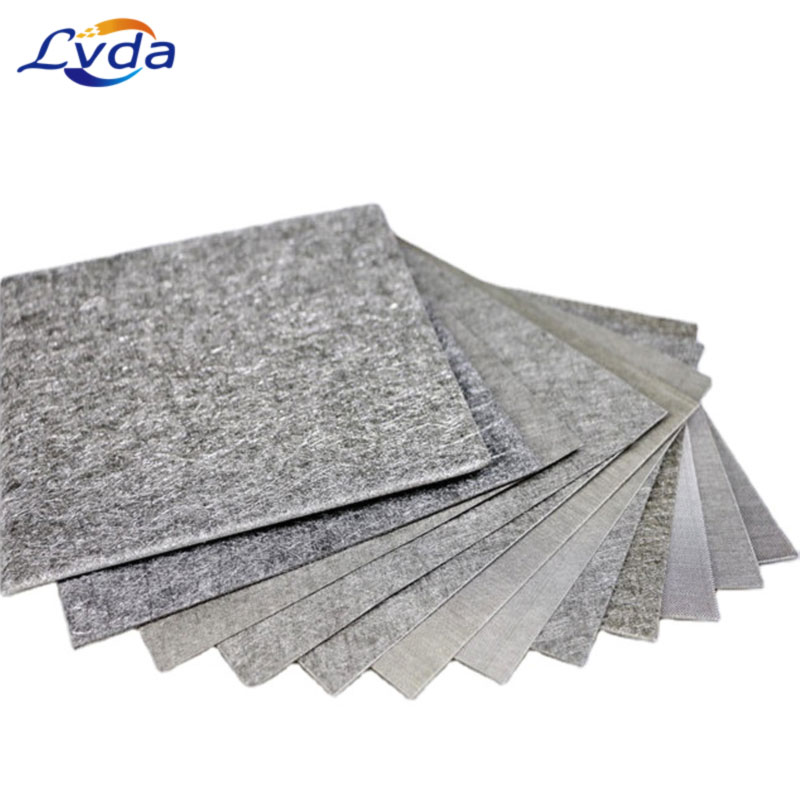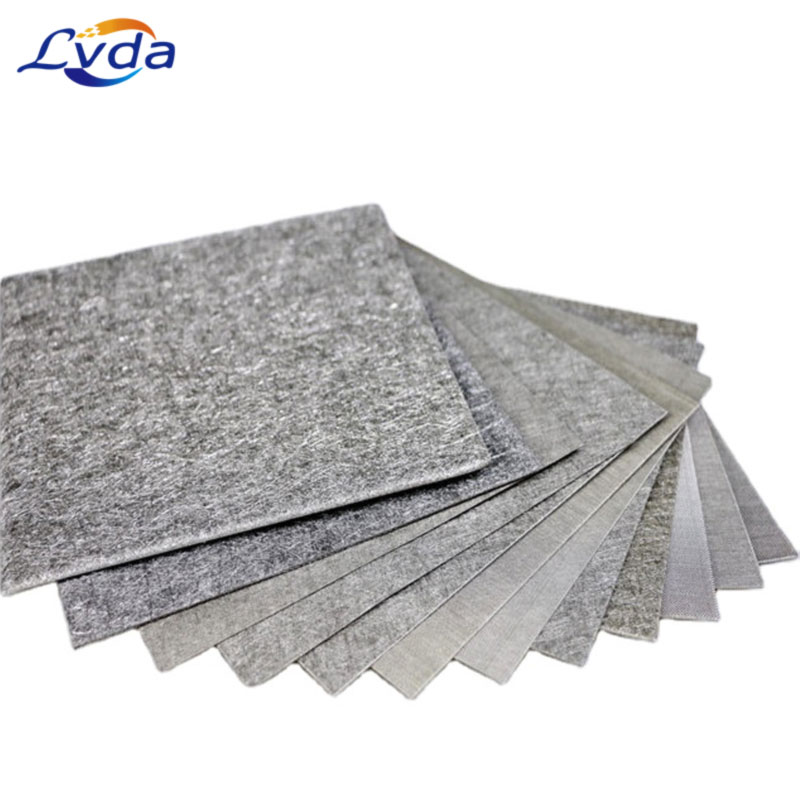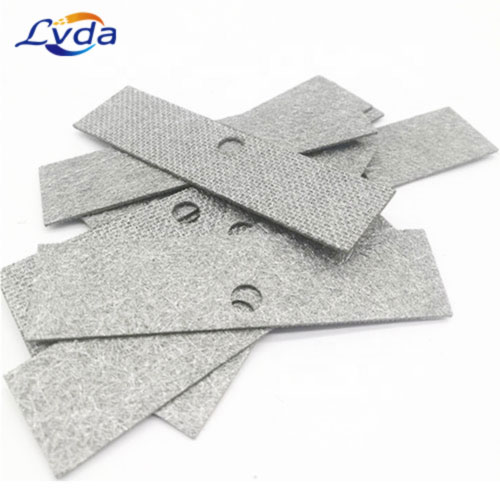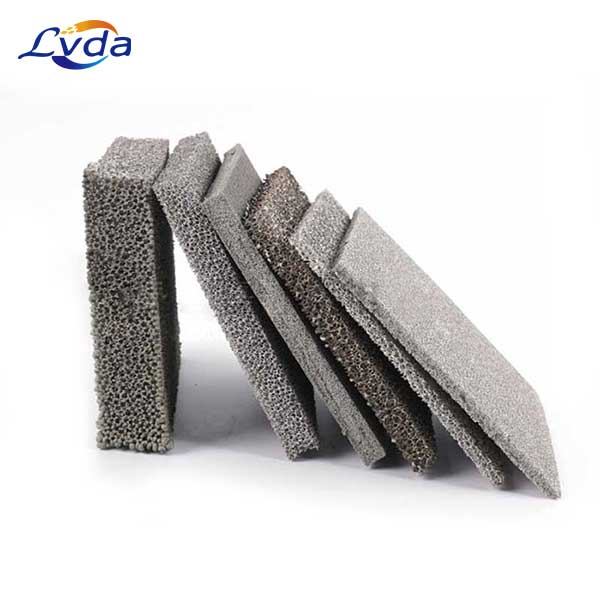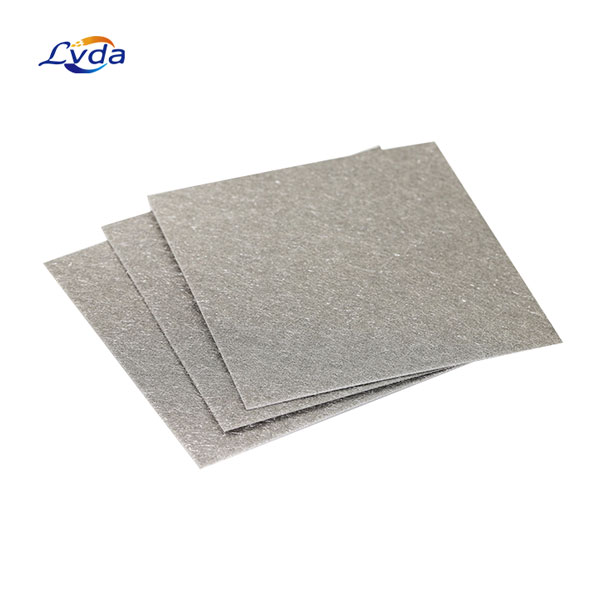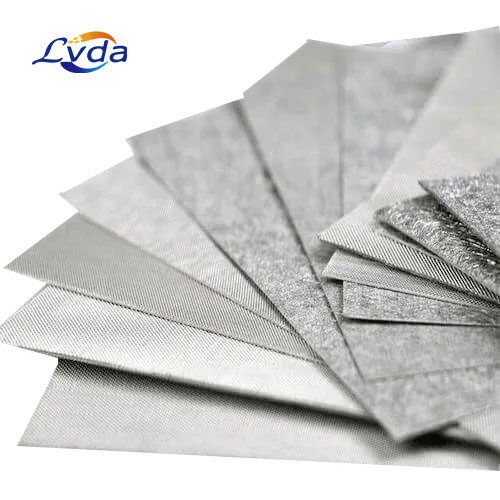Product Details
Nickel fiber felt is made of micron-level pure nickel fiber in accordance
with foreign technical standards, through special felt laying process and
ultra-high temperature vacuum sintering process.
Compared with nickel mesh or nickel powder sintered plate, nickel fiber felt
has excellent three-dimensional network porous structure, high porosity, large
specific surface area, uniform pore size distribution, strong corrosion
resistance, good water permeability, good heat dissipation and stable
performance. , long life and other advantages.
Nickel fiber felt is widely used in fuel cells, military, aerospace, civil,
medical and other industries. In particular, hydrogen fuel cell diffusion media,
used in the anode diffusion layer (GDL) in proton exchange membrane (PEM) water
electrolysis.
LVDA can produce nickel fiber felts of various specifications and
performances according to customer requirements.
Basic parameters
Material |
Pure nickel |
| Color |
Light grey |
| Size |
Customized upon request |
| Thickness |
0.2mm-2mm regular thickness (0.25, 0.4, 0.6, 0.8, 1.0mm) |
| Porosity |
50-90% (It can be customized upon request) |
Features
· Good conductivity
· High mechanical strength
· Good chemical stability
· Strong corrosion resistance
Manufacturing flow
Nickel wire→Cluster drawing→Nickel fiber→Fiber
shear→Air-laid→Sintering→Nickel fiber felt
In the whole process, fiber drawing is a key step. Compared with melt
spinning, mechanical cutting, monofilament drawing and other methods, the
preparation technology adopted by cluster drawing has the advantages of uniform
wire diameter, easy continuous production and low cost. A number of technical
problems in the cluster drawing process have been solved. Nickel fibers with
different wire diameters from 6 μm to 40 μm can be produced to meet the
requirements of nickel fiber mats with different properties.
The shearing of the fiber is carried out on a special cutting machine, which
can be cut into different specifications such as 33 mm in length. It has the
characteristics of uniform shearing length and high production efficiency. The
nickel fiber is laid into a net by the air flow method, and the equipment used
is an imported felt laying unit. By adjusting various complex process
parameters, the laid nickel fiber net has good uniformity and no defects such as
bundled fibers and fiber agglomeration, and the single weight can be controlled
as needed.
Applications
Filter material
Because of its excellent permeability, foam metals are widely used in the
filtration industry, especially in industrial filtration, and can be made into
many kinds of filters. The principle is that the pores of foam metal materials
have the function of stopping and trapping solid particles contained in the
fluid, filtering and separating gas or liquid, and then purifying or separating
the medium. Foam metal filters can filter solid particles and other substances
from liquid (such as petroleum, gasoline, refrigerant, polymer melt and
suspension, etc.), or air and other airflow media. Commonly, the properties of
filter elements are tubular, plate-like, flaky, plate-shaped and cup-shaped.
Photocatalyst series air filter screen
The photocatalyst materials used in this series of air filter screen are Nano
fine compound composite powder manufactured by high technology and evenly
deposited on the carrier surface by power coating or electrostatic spraying.
There are paper-based photocatalyst filter screen, honeycomb photocatalyst
filter screen, fibrous photocatalyst filter screen, gold photocatalyst filter
screen and other types, Combined with ultraviolet light irradiation, it can
quickly decompose the smoke, impurities and peculiar smell in the air, so as to
achieve the effect of cleaning and filtration.
Chemical catalyst and support materials
Foam metal has the characteristics of porous and large surface area, and is
different from the commonly used non-metal and oxide catalysts and catalyst
carriers. It has high ductility, high thermal conductivity, especially good
mechanical properties, and is easy to be processed into various shapes. The
application range is ten wide, and the porous foam metal has many openings. It
shows good hydrodynamic properties. Therefore, it has very significant
advantages in the catalytic reaction of gas and liquid. In catalytic reaction,
foam metal can be directly used as catalyst or foam metal as a carrier.
Battery electrode material
The foam metal has the electrical conductivity and self supporting ability of
the serial number. There are a large number of pores in it, which can provide a
large specific surface area. It is an excellent electrode material. It is
suitable for various batteries, fuel cells, air batteries and solar cells, as
well as various electrochemical process electrodes.
Heat exchange and adsorption materials
The foam metal has three-dimensional three-dimensional porous structure,
large specific surface area and good thermal conductivity of the metal itself.
When gas or liquid flows through the pores of the foam metal, it will take away
heat or increase heat, so that the foam metal will be cooled or heated to
achieve heat exchange. It is an effective material for heating, heat dissipation
and heat exchange.
Property
The performance of the nickel fiber felt has a great influence on the
performance of the MH-Ni battery, which determines the loading and effective
utilization of active materials, and is the technical key to the successful
application.
These properties include fiber diameter, nickel felt thickness, pore size,
porosity, unit weight, tensile strength, elongation, and the so on.
Pore size
The pore size of the nickel fiber felt has a great influence on the filling
performance of the active material. The pore size is too small and the active
material is not easy to fill, which will cause the phenomenon that the active
material is only concentrated on the surface of the electrode and cannot be
filled inside. If the pore size is too large, the accumulation of active
materials is serious, which increases the internal resistance of the electrode,
reduces the utilization rate of active materials, and adversely affects the
performance of the electrode.
Due to the different filling process methods of active substances in each
production plant, the requirements for the pore size are also different. For
electrodes made of nickel fiber mats, the pore size can be effectively
controlled by the preparation of fibers with different diameters. Generally
speaking, in the case of the same unit weight (mass per unit area), the thicker
the fiber diameter, the larger the aperture size. According to this, the wire
diameter size can be selected according to the aperture requirements to lay a
mat that meets the requirements.
Porosity
The porosity of nickel felt is an important indicator that affects battery
performance. Electrodes with high porosity can carry more active materials and
increase the volume specific energy of the battery. The porosity of nickel fiber
felt can reach 95%-98%, and the fiber diameter has little effect on the porosity
of nickel felt. The porosity of fibers with a diameter of φ10μm~φ40μm can reach
the level of 94.9%~96.8%.
The effect of single weight on the porosity of the nickel felt is as follows:
With the increase of the single weight, only the natural thickness of the nickel
felt increases, while the porosity does not change significantly. The
experimental data is that when the unit weight increases from 300g/m2 to
600g/m2, the porosity only decreases from 95.8% to 94.8%.
The thickness of the nickel fiber felt also has a certain influence on the
porosity. Under the same single weight condition, the smaller the thickness, the
smaller the porosity. For the nickel fiber felt with a single weight of
400g/m2-480g/m2, the thickness is controlled at about 1.5mm , a high porosity
can be maintained.
Specific surface area
Nickel fiber felt has a remarkable performance characteristic, that is, it
has a large specific surface area. The actual test data can reach 5X104cm²cm³
-2.0X105cm²cm³, which is mainly determined by the preparation process
characteristics of the nickel fiber felt. The drawn fiber itself has a large
surface area, and the fibers are laid into a network to form a network structure
that is evenly overlapped with each other. Fiber diameter and unit weight have a
certain influence on the specific surface area. As the fiber diameter becomes
thicker and the unit weight increases, the specific surface area shows a
downward trend.
Comparison of the properties between Ni fiber felt and nickel foam
| Property |
Ni fiber felt |
Nickel Foam |
| Thickness /mm |
1.0-3.0 |
1.2-3.0 |
| Porosity /% |
95-98 |
95-98 |
| Unit weight /g m² |
300-1000 |
350-1000 |
| Pore size /u m |
100-700 |
300-800 |
| Specific surface area /cm²cm³ |
(0.5-2.0)X 10⁵ |
50 |
| Tensile strength /MPa |
5-8 |
0.1-1.5 |
| Elongation /% |
≥8 |
≥5-7 |
In conclusion
1) The thickness, pore size, unit weight, porosity and other performance indicators of nickel fiber felt can be comparable to nickel foam.
2) Nickel fiber felt has the characteristics of larger specific surface area, higher tensile strength and better flexibility than foamed nickel, and is suitable for making large-capacity, high-current nickel-metal hydride batteries.


